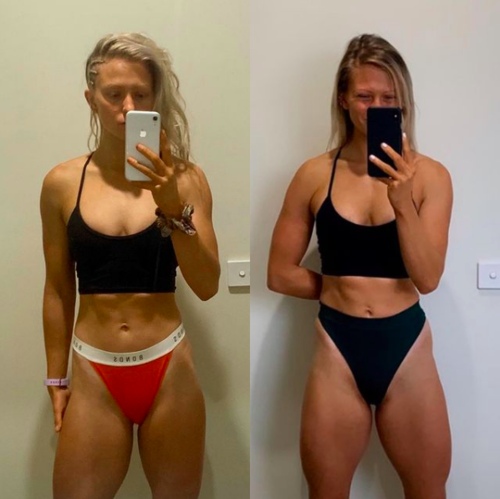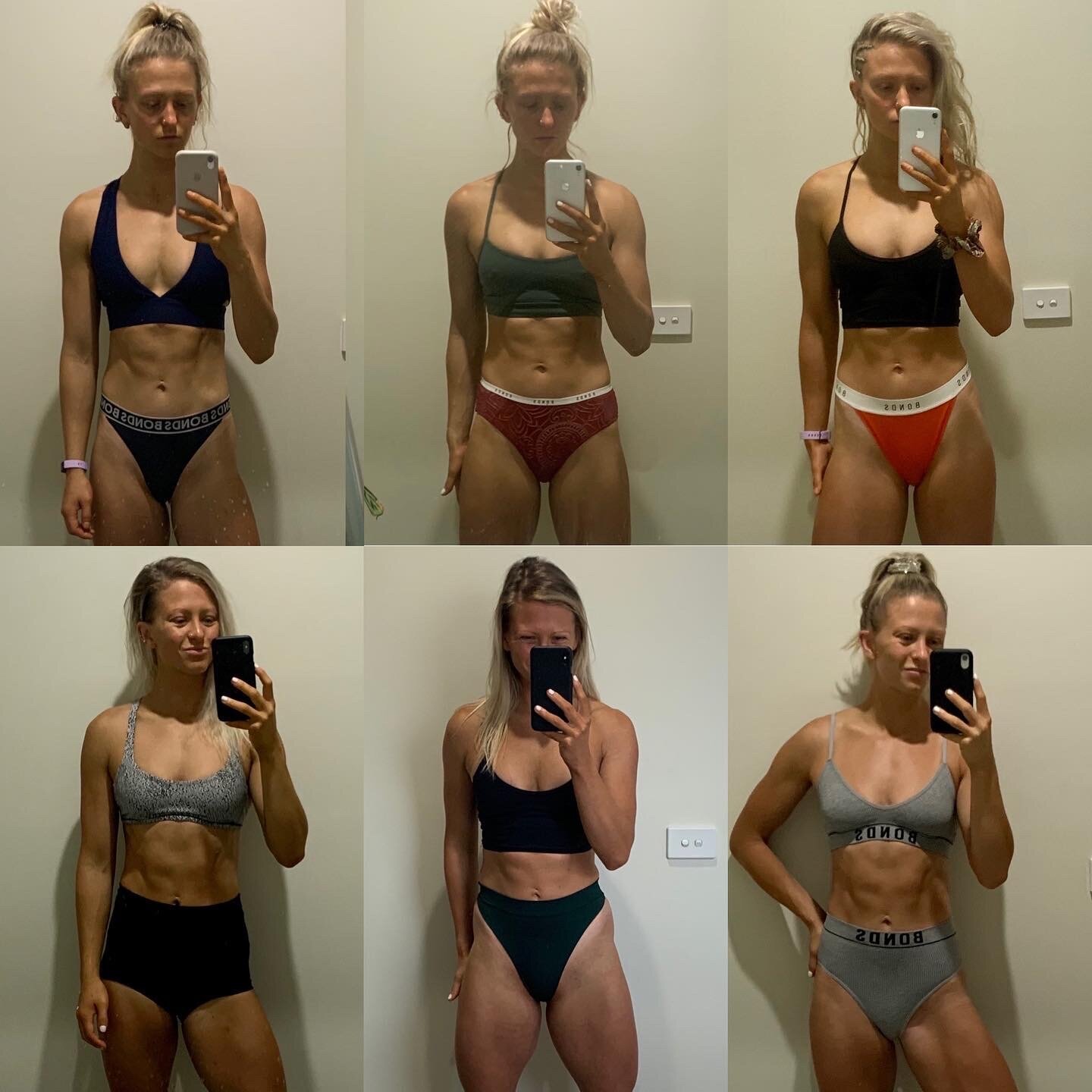I Want To Build Muscle Without Gaining Fat...
Attempting to build muscle and drop fat at the same time is a pretty inefficient pursuit. So then, if you can’t do both at the same time, how can you at least build muscle without gaining fat?
In short, it’s still gonna be a damn inefficient pursuit, probably not worth pursuing.
Importantly, there are some exceptions here including beginner levels lifters, those with high levels of body fat and some genetic outliers, so consider this article to be written for everyone except those people.
Muscle gain is a slow process, particularly for women. Controlling it so much so as to resist any fat gain is realistically not going to get you anywhere. You’ll likely just stay at your current size. So what to do if you want to build muscle but also want to be lean?
Rather than setting out with the goal of building muscle and no fat, the more productive goal would be to build muscle while gaining as little fat as possible. In this way, you’ll gain a little but not a lot body fat that you can just cut off later.
If you’re in control enough of your nutrition that gaining and cutting cycles are pursuits you’re toying with, then cutting fat is a relatively easy task — it is a significantly easier and faster process than muscle building. Therefore, if you gain some fat while building muscle in your gaining phase, you can just cut that later, likely over a period of just a couple of weeks.
Soooo, how do you do that?
Muscle building non-negotiables.
Consume adequate calories.
You should aim to increase your scale weight by 1-2% per month. So for a 65kg person for example, around 975g per month or 225g per week. A small surplus of around 200 calories per day above your maintenance is a good starting point, however collect data as you go. If you’re gaining significantly faster than this on average, decrease the surplus. If you’re gaining significantly slower than this on average, increase it. Importantly don’t be married to a specific number of calories. If your scale weight isn’t increasing, you’re not in a surplus.
Also, note that I say “on average” as you do not want to make knee jerk changes every week. Some weeks you may gain more and some weeks you may gain less and that is fine, as long as you’re trending in the right direction at roughly the right rate on average.
Consume adequate protein.
Protein is essential for muscle growth. You should be eating around 1.6-2.2g of protein per kilo of bodyweight per day. EG, for a 65kg person 104-143g of protein per day.
Train hard enough.
Resistance training is the stimulus for muscle growth. Without training stress, the body has no need to undergo the arduous process of muscle building and will instead store the excess energy as body fat. Thus, resistance training is a key piece of the puzzle in determining whether it’s muscle or fat you’re gaining.
Frequency: train each muscle group 2-4x per week, 6-8 hard sets per session.
Intensity: hypertrophy can occur across any rep range as long as sets are taken close to failure. Lower rep, heavier work may require more sets to achieve adequate effective volume and higher rep work will need to be taken increasingly close to failure (eg 2-3 reps from failure in the 1-5 rep range V to failure for work around 20-30 reps.
Repeat for a long time.
It’s gonna take at least a month of hard training in a calorie surplus to achieve realistically any muscle growth at all so devote a fair amount of time to your gaining phase. The longer the better really; as long as you can while being comfortable with your body weight and in good health. If you’re going to commit less than a month to a gaining phase, probably don’t bother.
For optimal performance and body composition outcomes, spend as much time as possible in a surplus or at maintenance calories. Spend as little time as possible in a deficit — only as needed to keep your weight in check or to achieve certain body weight or aesthetic goals.
Tracking progress.
Scale data.
A body weight scale is one of the most simple tools we have for assessing whether or not we’re growing. However, they are not without limitations. Body weight scales only assess our total body weight, not what type of tissue we are gaining which is why it is helpful to use other tools alongside the scale. But furthermore, learning how to actually use scale weight data is damn important — otherwise you’re in for an emotional rollercoaster every time your scale weight fluctuates (and it will!) I have a very helpful article on how to interpret and use scale weight data which you can read here.
Some key points though:
Weigh yourself at least three days per week so you can take weekly averages that balance out any outliers in the data (eg, excessively heavy or light days).
Weigh yourself at the same time, under the same conditions each day, ideally first thing in the morning before using the bathroom.
Wear roughly the same thing each time you weigh in, ideally as little clothing as possible.
Learn how to read the data. Again, read this article.
And now that you’re taking weekly averages, actually use the weekly averages. Don’t make knee jerk reactions and change your intake every time you have a heavy or light day. Use trends over a period of weeks to guide decision making
Take photos.
Photos can be extremely insightful in assessing changes in your body composition over time. However, they can derail you if looking at them makes you feel chunky and like you want to abort mission immediately. My suggestion is to take photos only at the start and end of each nutrition phase. I take photos when I finish gaining and when I finish cutting so that whenever I hit an “extreme” of my body composition, it’s always when I’m ready to change direction.
Perhaps the most valuable contribution of progress photos is the reminder they provide for future phases. Perhaps the last gaining phase you did was absolutely horrifying, but now that you’ve taken off the excess fat you had gained, you love the extra muscle mass you’re carrying. So having a photo history of your previous nutrition habits can really sell to you sticking the course for future ones.
Isolation exercises.
A strong correlation exists between muscle size and force output, therefore we can assess the force output of individual muscle groups via isolation exercises to check for gains. (Isolation exercises are those that occur at a single joint. EG, a bicep curl or a tricep extension involve movement only at the elbow; leg extensions or leg curls involve movement only at the knee).
Isolation exercises can only really reflect muscle growth of one muscle group and not necessarily the whole body though and realistically, if you’re watching the scale and taking photos and things are trending in the right direction, you can probably safely assume that you are growing. If you like maxing out your bicep curls, perhaps you’ll enjoy the thrill of this; if you don’t, you really don’t need to. Personally I do not and likely never will.
Helpful tips for not freaking out.
Gaining weight is absolutely horrifying for a lot of (most) people. We’ve been groomed our whole lives to believe that gaining weight is representative of letting yourself go / being out of control / getting fat / etc. As such, the hard part of muscle building is rarely the demanding training sessions or the volume of food required but rather, the mental battle. Here’s some helpful tips for not freaking out during your gaining phase:
As above, take photos at the end of each gaining/cutting phase, never in the middle. It can be hard to continue gaining and sticking the course when you feel chunky, but if you only photograph yourself at the end and you find that experience confronting, well it’s time to cut anyway :D
Get educated on the factors that influence weight gain and loss and body composition change. None of these are particularly complicated processes nor are they difficult to reverse. The more and better you understand that none of the changes you make need to be permanent if you don’t want them to, the more at peace you can feel taking them on.
Get educated on body image. Being heavier or holding more body fat is only a negative experience because you’ve learned to interpret it as such. Learning about the way you perceive your body and taking control of that consciously is very liberating. The Body Image Workbook by Thomas Cash is an excellent read and Shannon Beer has created some epic webinars on the topic. I would highly recommend both of them.
Engage external help if you think it’s too much of a psychological challenge alone. A nutritionist, dietitian or nutrition coach can be extremely valuable largely because you have someone else who is removed from the emotions of your body weight change able to make decisions on your behalf. This will prevent knee jerk/emotional decisions and very likely lead to much better outcomes. A good coach/health professional should also educate you a lot so that overtime you become much more confident in and trusting of the process and better able to go it alone if you chose to.
I’ve made a few IG posts about the mental battle of muscle building over time too which you might like:
An example: me!
I think I’m a decent example here. I started training with my current coach in May 2019, so I have about two years of data and photos from our time together so far:
I started at 60.55kg (first photo)
My heaviest weight has been 66.85kg (fifth photo)
I’m ~65.5kg now (last photo)
I have competed at 64kg twice in this two year period.
So my bodyweight has fluctuated within range of 6.3kg.
I’ve spent:
57 weeks actively gaining
22 weeks maintaining my weight
14 weeks actively cutting weight
5 weeks on vacation / just yolo-ing
So in that ~two year period, I have been through only two cutting phases totalling 14 weeks: one for four weeks so I could feel glam for a holiday in the Philippines and one when I wanted to compete post getting on board the gain train during lockdown. That’s only 15% of the time spent dieting/ hungry and the remainder, either just enjoying my life or actively building muscle (and looking a little chunkier for it).
I’m significantly more muscled now than when I started and I’m probably just as lean. But to get here, I’ve had to have periods of feeling a little chunkier. I’m by no means “done” and I’ll continue gaining weight until I can get as big and as strong as I possibly can either within my current weight class or maybe I’ll move up and get even more jacked. Who knows? Jacked feels good though.
If you have questions about structuring your nutrition and training to start building some muscle, I would love to hear from you. Consultation calls are free of charge and obligation.






